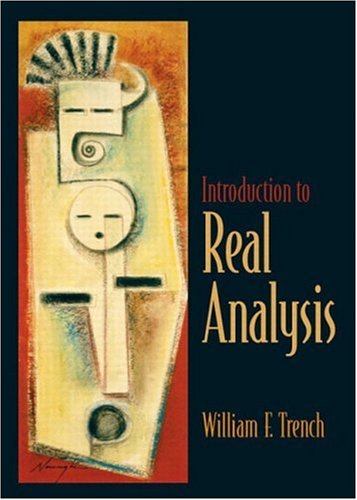
Introduction to Real Analysis
by William F. Trench
Publisher: Prentice Hall 2003
ISBN/ASIN: 0130457868
ISBN-13: 9780130457868
Number of pages: 583
Description:
Using an extremely clear and informal approach, this book introduces readers to a rigorous understanding of mathematical analysis and presents challenging math concepts as clearly as possible. The book is written for those who want to gain an understanding of mathematical analysis and challenging mathematical concepts.
Download or read it online for free here:
Download link
(2.4MB, PDF)
Similar books
 The General Theory of Dirichlet's Series
The General Theory of Dirichlet's Seriesby G.H. Hardy, Marcel Riesz - Cambridge University Press
This classic work explains the theory and formulas behind Dirichlet's series and offers the first systematic account of Riesz's theory of the summation of series by typical means. Its authors rank among the most distinguished mathematicians ...
(6368 views)
 The Theory Of Integration
The Theory Of Integrationby L. C. Young - Cambridge University Press
On the one hand, practically no knowledge is assumed; on the other hand, the ideas of Cauchy, Riemann, Darboux, Weierstrass, familiar to the reader who is acquainted with the elementary theory, are used as much as possible ...
(5815 views)
 Real Variables: With Basic Metric Space Topology
Real Variables: With Basic Metric Space Topologyby Robert B. Ash - Institute of Electrical & Electronics Engineering
A text for a first course in real variables for students of engineering, physics, and economics, who need to know real analysis in order to cope with the professional literature. The subject matter is fundamental for more advanced mathematical work.
(63003 views)
 Elementary Real Analysis
Elementary Real Analysisby B. S. Thomson, J. B. Bruckner, A. M. Bruckner - Prentice Hall
The book is written in a rigorous, yet reader friendly style with motivational and historical material that emphasizes the big picture and makes proofs seem natural rather than mysterious. Introduces key concepts such as point set theory and other.
(20515 views)